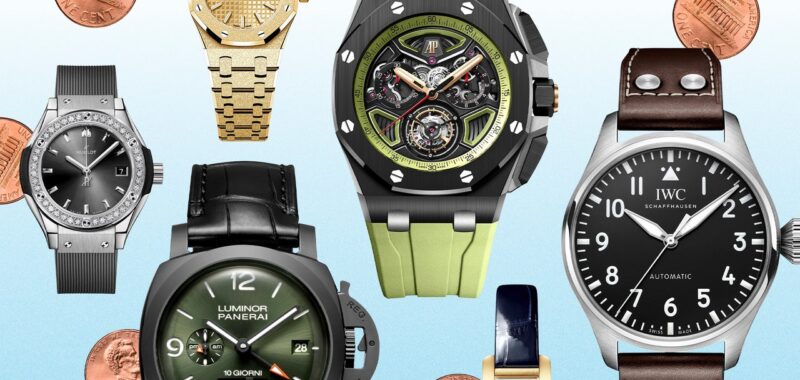Why Tiny Watches Is the Biggest Trend in Timepieces
Not long ago, in the 2000s, the ideal watch was about the size of an Oreo. Anything smaller than 40 millimeters—the iconic sandwich cookie is 44 mm—was considered a ladies’ watch. But over the past half decade, watch collectors have rediscovered the 35-mm vintage models of the 20th century, and the watch industry has responded accordingly. Enter the era of the mini watch.
The trend started, as so many do in the watch world today, with Cartier. Last year, the venerable brand unveiled the mini Baignoire, a diminutive version of its bathtub–shaped watch that measures just 19 mm by 25 mm , or roughly the diameter of a pressed penny. Once it hit the market, the mini Baignoire performed in ways usually reserved for hyped steel sport watches: Cartier immediately sold out of the piece, creating a long wait list of buyers and birthing a big trend for tiny watches in the process. Now it seems that every brand in Switzerland is thinking
small. This year, Cartier followed up its Baignoire bangle with bite-size versions of the Tank LC and Tank Américaine, and several other manufacturers have joined in. Hublot, known for its dramatically beefy watches, debuted dainty versions of its Classic Fusion Original. In May, Audemars Piguet shrunk its flagship model, the Royal Oak, all the way down to a teensy 23 mm.
While the fixation on size in the industry revolves around the push and pull between vintage and modern pieces, these minis start a new conversation altogether. They’re meant to be worn as jewelry, maybe stacked together with multiple bracelets and watches or in other creative ways. Mark Cho, cofounder of the Armoury, loved the new Baignoire so much upon its debut that he bought two—one in yellow and one in rose gold. He started wearing one as a bracelet, with the face rotated inward, on his right wrist. With so many possibilities, we should ditch the mini label and start calling them what they are: fun size.
Big Watch Bros Still Exist
I joined my first virtual meeting of Panerai loyalists, the Paneristi, in April 2021. The group gets together primarily to hang with like-minded lovers of the brand but often drifts to bigger topics. Befitting the diving brand’s heritage, one attendee called in from a boat to share his wisdom on watch sizes. “42 [mm] for guys, I think, starts to get a little small,” he said.
While many enthusiasts are gravitating toward smaller and smaller watches, some holdouts are doubling down on the 42-mm-and-up size class. For Adam Craniotes, the founder of eminent watch club RedBar, whose personal sweet spot starts at 42 mm, that’s just the way he believes some pieces are meant to be. “An IWC Big Pilot is, by definition, big,” he said. Wearing them allows him to cosplay as the adventurous pilots and divers who needed these watches as large and legible as possible.
And while mini watches are red-hot, not long ago many brands single-mindedly pursued big watches. In the 1990s, Audemars Piguet found ways to pump up the size of its Royal Oak, releasing the brawny Offshore version.
Big watches might not be on trend right now, but folks like Craniotes know the pendulum will swing back around. After all, he argues, a big watch better serves the true purpose of a timepiece today. “Size goes hand in hand with the statement they make on the wrist,” Craniotes said, “and let’s be honest here, that’s why a lot of folks choose to wear a watch.”
Cam Wolf is GQ’s watch editor.
A version of this story originally appeared in the September 2024 issue of GQ with the title “The Biggest Little Watches…And the Biggest Big Watches”


